Space
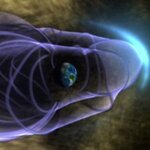
Earth's magnetic field, which shields our planet from particles streaming outward from the Sun, often develops two holes that allow the largest leaks, according to researchers sponsored by NASA and the National Science Foundation.
"The discovery overturns a long-standing belief about how and when most of the solar particles penetrate Earth's magnetic field, and could be used to predict when solar storms will be severe. Based on these results, we expect more severe storms during the upcoming solar cycle," said Vassilis Angelopoulos of the University of California, Los Angeles, Principal…

Black holes? Maybe we should think of them as donut holes. The shape of material around black holes has been seen for the first time: an analysis of over 200 active galactic nuclei—cores of galaxies powered by disks of hot material feeding a super-massive black hole—shows that all have a consistent, ordered physical structure that seems to be independent of the black hole's size.
"This should be a very messy and complicated environment, but the stuff flowing onto different black holes looks the same, no matter how massive the black hole is," says Barry McKernan, a Research Associate in…
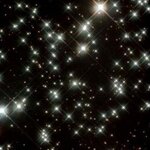
Astronomy&Astrophysics is publishing spectroscopic observations with NASA's space-based Far-Ultraviolet Spectroscopic Explorer (FUSE) of the white dwarf KPD 0005+5106. The team of German and American astronomers who present these observations show that this white dwarf is among the hottest stars known so far, with a temperature of 200,000 K at its surface. It is so hot that its photosphere exhibits emission lines in the ultraviolet spectrum, a phenomenon that has never been seen before. These emission features stem from extremely ionized calcium (nine-fold ionized, i.e., CaX), which is…
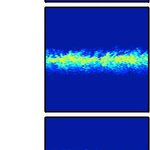
A new paper in The Astrophysical Journal suggests that turbulence plays a critical role in creating ripe conditions for the birth of planets, a challenge to the prevailing theory of planet formation, gravitational instability.
Using three-dimensional simulations of the dust and gas that orbits young stars, the study claims that turbulence is a significant obstacle to gravitational instability, which scientists have used since the 1970s to explain the early stage of planet formation.
Gravitational instability proposes that dust will settle into the middle of the protoplanetary disk…

The people of Aroostook County, Maine, win my award for most awesome community today. When you construct what is billed as the largest complete three-dimensional scale model of the solar system in the world, the choice is a no-brainer.
Doug Bachler, the coolest guy I know (after Hank, of course), sent me this link about the model solar system today. (Doug enables my geekiness, so he deserves special mention by name.) Click on the map on the site to see the solar stretch of stunning science.
The lovely Aroostookians built a 40-mile long model, to scale, of the solar system,…
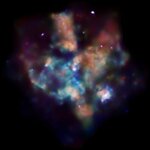
Found in the nearby Large Magellanic Cloud, 30 Doradus is one of the largest massive star forming regions close to the Milky Way. Enormous stars in 30 Doradus, also known as the Tarantula Nebula, are producing intense radiation and searing winds of multimillion-degree gas that carve out gigantic bubbles in the surrounding cooler gas and dust. Other massive stars have raced through their evolution and exploded catastrophically as supernovae, expanding these bubbles into X-ray-brightened superbubbles. They leave behind pulsars as beacons of their former lives and expanding supernova remnants…

Moons outside our Solar System with the potential to support life have just become much easier to detect, thanks to research by an astronomer at University College London (UCL).
David Kipping has found that such moons can be revealed by looking at wobbles in the velocity of the planets they orbit. His calculations, which appear in the Monthly Notices of the Royal Astronomical Society today, not only allow us to confirm if a planet has a satellite but to calculate its mass and distance from its host planet factors that determine the likely habitabiliity of a moon.
Out of the 300+ exoplanets…

By watching the motions of 28 stars orbiting the Milky Way's most central region with admirable patience and amazing precision, astronomers have been able to study the supermassive black hole lurking there. It is known as Sagittarius A* (pronounced "Sagittarius A star"). The new research marks the first time that the orbits of so many of these central stars have been calculated precisely and reveals information about the enigmatic formation of these stars — and about the black hole to which they are bound.
"The centre of the Galaxy is a unique laboratory where we can study the fundamental…
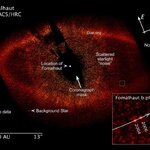
In 2006, astronomer Alice Quillen of the University of Rochester predicted that a planet of a particular size and orbit must lie within the dust of a nearby star. That planet has now been photographed by the Hubble Space Telescope, making it only the second planet ever imaged after an accurate prediction. The only other planet seen after an accurate prediction was Neptune, discovered more than 160 years ago.
"It's remarkable," says Eugene Chiang, associate professor of astronomy at the University of California at Berkeley, and part of the team that imaged the new planet. "Alice saw the…

New images taken by instruments on board ESA's Venus Express provide a unique insight into the windy atmosphere of our neighbouring planet and reveal that global patterns at the Venus cloud tops are the result of variable temperatures and cloud heights.
Using the spacecraft's ultraviolet and infrared cameras, the Venus Express team, including UK scientists, have been able to compare what the planet looks like at different wavelengths, allowing them to study the physical conditions and dynamics of the planet's atmosphere. These results appear today (4th December) in the journal Nature.…